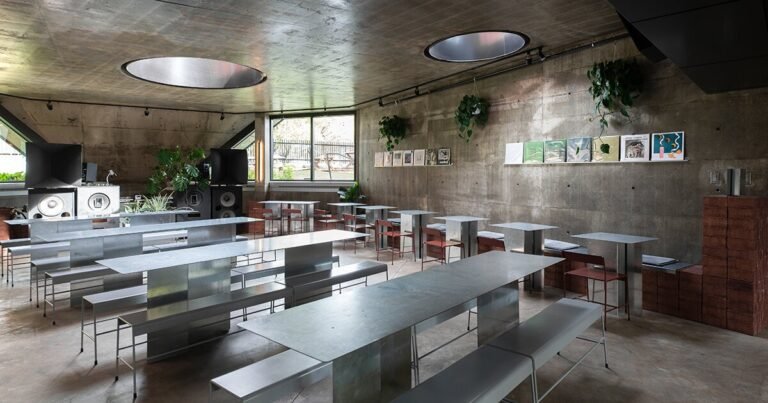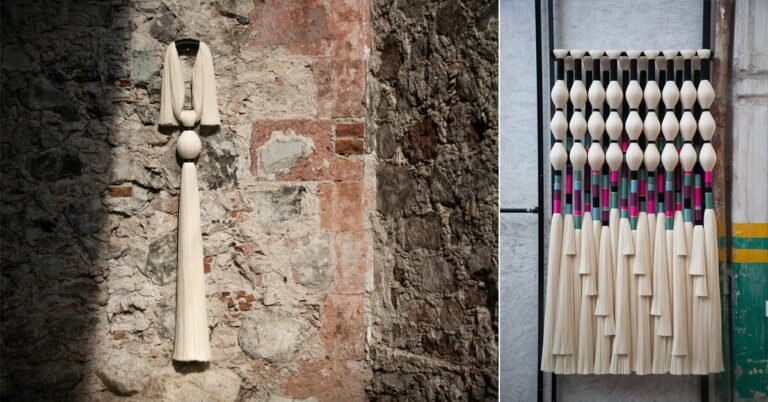Coudraie & Les Hêtres Homes / FWG Architects Sàrl
Coudraie & Les Hêtres Homes / FWG Architects Sàrl


Text description provided by the architects. The project is made up of two independent buildings: “La Coudraie,” which is a temporary accommodation that offers training for young adults with disabilities to live independently; and “Les Hêtres” which has six studios and community spaces in which students can learn and maintain autonomy in the daily life of an individual dwelling.



Location – a place of reliance. The project first of all seeks to safeguard the site as much as possible, which is particularly qualitative due to the nature present there. This choice of preserving the green and arboreal spaces, also integrating the future construction site, led to grouping the morphologies at the top of the site, positioning them so that the minimum number of trees are cut down.



The nature of the programme, which combines spaces that foster autonomous living for the adolescents, together with spaces in which “interaction” is also the aim, has resulted in the creation of a courtyard, common to the two buildings of Coudraie and Les Hêtres, as well as the building to be built later. This small and central space is a hub of encounter for all residents, without affecting the privacy of each of the rooms built. The architectural structures fit naturally into the constructions of the municipality, with stairs similar to those of the nearby context, as well as unique geometric features that are likened to those of the neighbouring houses.



Programme: a “capable” architecture. Particular attention is paid to the bedroom and study area. The aim is to offer residents a very comfortable and intimate living space, benefiting from framed views of the garden and the horizon. Each room is designed to be different from the others by allowing for multiple layout possibilities (bed, desk, wardrobe position) and through the geometries that are intentionally non-orthogonal at two angles. The result is an open and dynamic space. Additionally, the location of the windows is different for each room, which makes them even more exclusive.



The living spaces are thus personalised, achieving the spatial plan for the residents’ autonomy that the institution pursues. The second issue lies in the definition of common spaces, designed in such a way that these young people are in contact with each other, as well as with the educational teams of the establishment. These thresholds, where the otherness of these people is built, first take shape in small transit areas between the free spaces of the floors and the interior of the room. When the door is “open” (a sign of a possible interaction), the bedroom space is not offered literally and completely.


On the residence floor, the transit areas are designed as “windows” to the environment, and in a transversal way. These places also offer shared relaxation areas, with layouts that allow residents to read, work or chat. The ground floors of the two buildings are designed so that the common spaces open onto a well-oriented terrace, linked to a the tree-lined patio that connects the exterior spaces of the two projects. The entrances are carefully designed, with airlocks, and easy access to the changing rooms. Ambulation on the ground floor is fluid and clearly articulated with the staircase that benefits from a spatiality that visually connects the two floors.For La Coudraie, the kitchen connects directly to the dining room and then to the entertainment room. The spaces are thus visually connected by large interior windows that offer possibilities for connection with each other, as well as with the landscape. The utility room enjoys a view of the staircase and the entrance, for greater work comfort for the caretaker.

An environmentally-friendly building. Choosing a lightweight “wooden frame” construction enables a healthy and environmentally-friendly environment to be created using local resources. Construction and on-site assembly are fast, because the building is light and has minimal foundations, therefore making it more economical. The roof has a high standard of insulation (of the standard “MINERGIE P – ECO” type), highly limiting energy consumption. The building is heated by a pellet boiler with high energy performance and very low environmental impact.







